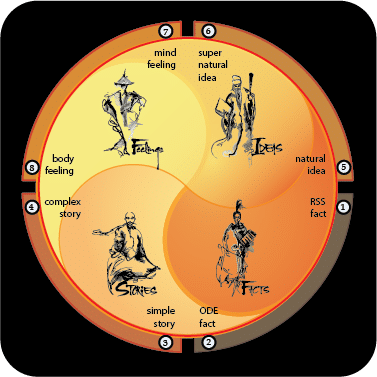How can the scientific method go wrong?
First, kudos to the person who asked this question. It may be the most important a scientist could ever ask. It alone asks, what tangible qualities must we understand in order to know the nature of all things in our world, including us? Not surprisingly, the minute you try to answer this question, the present method’s flaws begin to surface. Unfortunately, one of these flaws precludes a complete answer to this question. This said, here are just a few of the more obvious flaws:
The Definition Problem: As the brilliantly acerbic philosopher, Ludwig Wittgenstein so often pointed out, there can be no precision in words alone. And as the equally brilliant mathematician, Kurt Gödel wrote, no system of logic or numbers can ever be complete. (“Anything you can draw a circle around cannot explain itself without referring to something outside the circle – something you have to assume but cannot prove.”) The current scientific method chooses to ignore these two maxims and proceed as if they do not exist. And as a temporary answer, this is understandable. But to deny this problem exists or worse; to stop looking for a solution to this problem, is to forever infuse legitimate science with some of the worst defects present in a pseudoscience.
The Measurement Problem: When Jacob Bernoulli wrote the first book on statistics (The Art of Conjecture, 1713), he warned against equating stochastics (statistically based predictions) to tangible evidence. Bernoulli literally wrote the book on statistics. Yet most scientists have never even heard of this man, let alone felt the need to heed his warning. Imagine if you used the current scientific method’s pseudo mathematics to reconcile your checkbook? How long would it take for your financial life to be reduced to chaos?
The Real World Translation Problem: Most of the current method’s efforts center on isolating a select few variables, then manipulating them to gain knowledge. In theory, this knowledge can then be used to reconstitute a useful picture of natural reality. Unfortunately, there are no real world settings in which such limited variables exist, let alone do not impinge on the entire setting. Thus most of science’s theoretical knowledge cannot, and will never, translate well to real world settings.
Know this problem is best understood when posed as the argument between Parmenides and Heraclitus. Parmenides argued, nothing real ever changes; Heraclitus, the only reality IS change. And in case it is not immediately obvious, Parmenides is arguing for theoretical truth, while Heraclitus is arguing for real world truth. In truth, both will forever exist. So until science can reconcile these two differences; unchange vs change, scientifically sound outcomes will continue to suffer from the translation flaw.
The “Starting with an Answer” Problem: The present scientific method requires you to begin with an educated guess; an answer; a hypothesis. Unfortunately, doing this creates yet another example of Gödel’s circle. Indeed, the smaller science shrinks the circle, the more which gets left out. Science then uses statistics to mediate this deficiency, then claims these answers are “mostly true.”
Would you be okay with “mostly true” as an answer to a pregnancy test? How about as an answer to whether your car brakes will work the next time you step on them? Or what about when, on the day of your picnic, meteorologists offer you science couched in words like “chance of” and “partly”? Does this feel like real science?
The point is, if you leave out even one number in a math problem, you guarantee uncertainty. And science hates uncertainty. Ironically, the method by which science attempts to eliminate uncertainty guarantees uncertainty.
